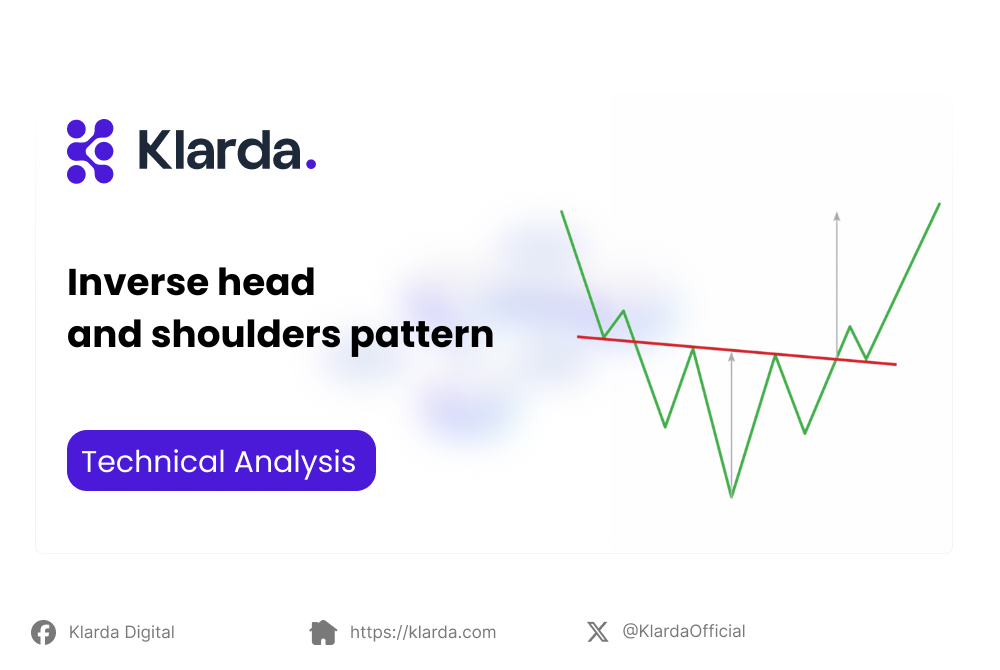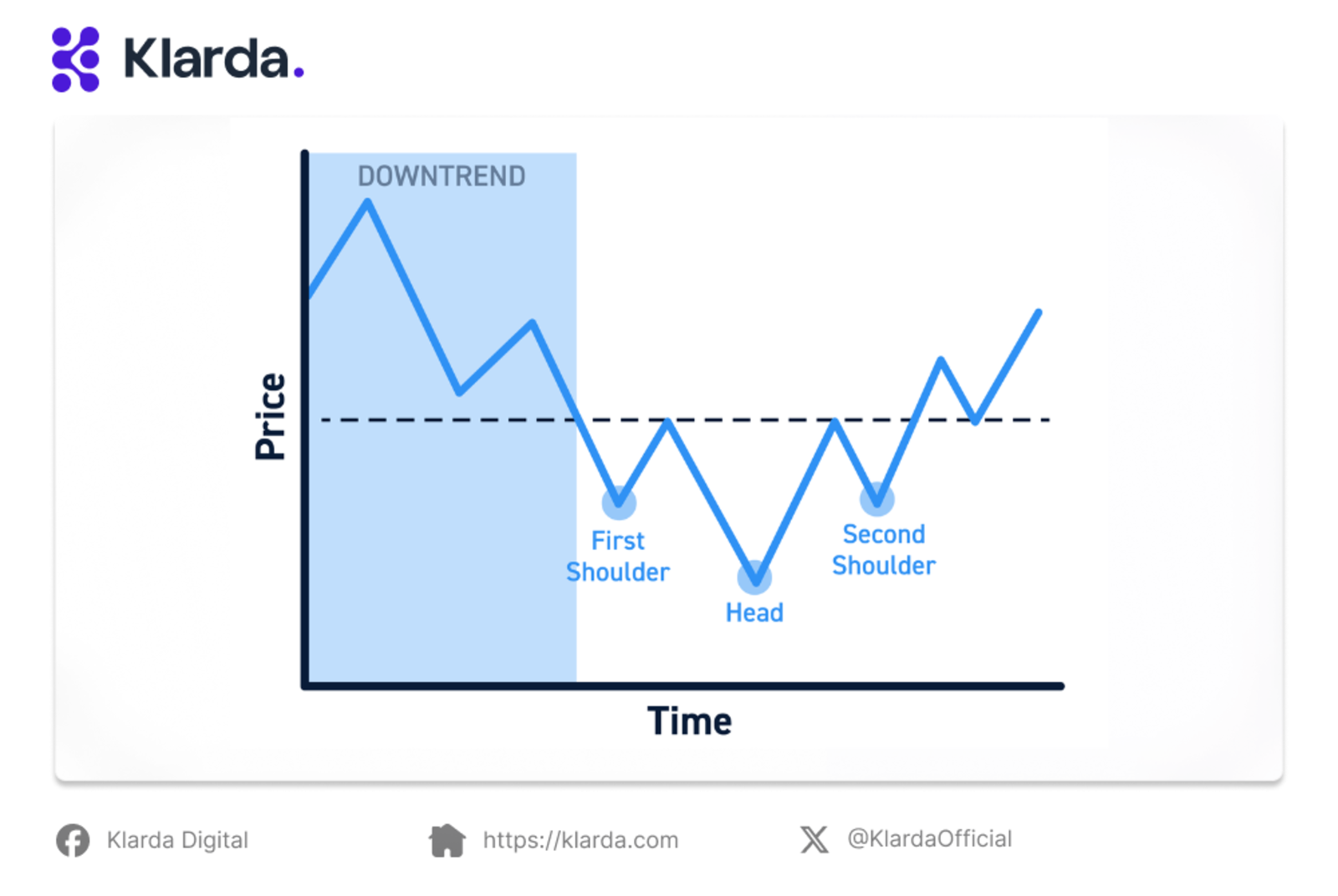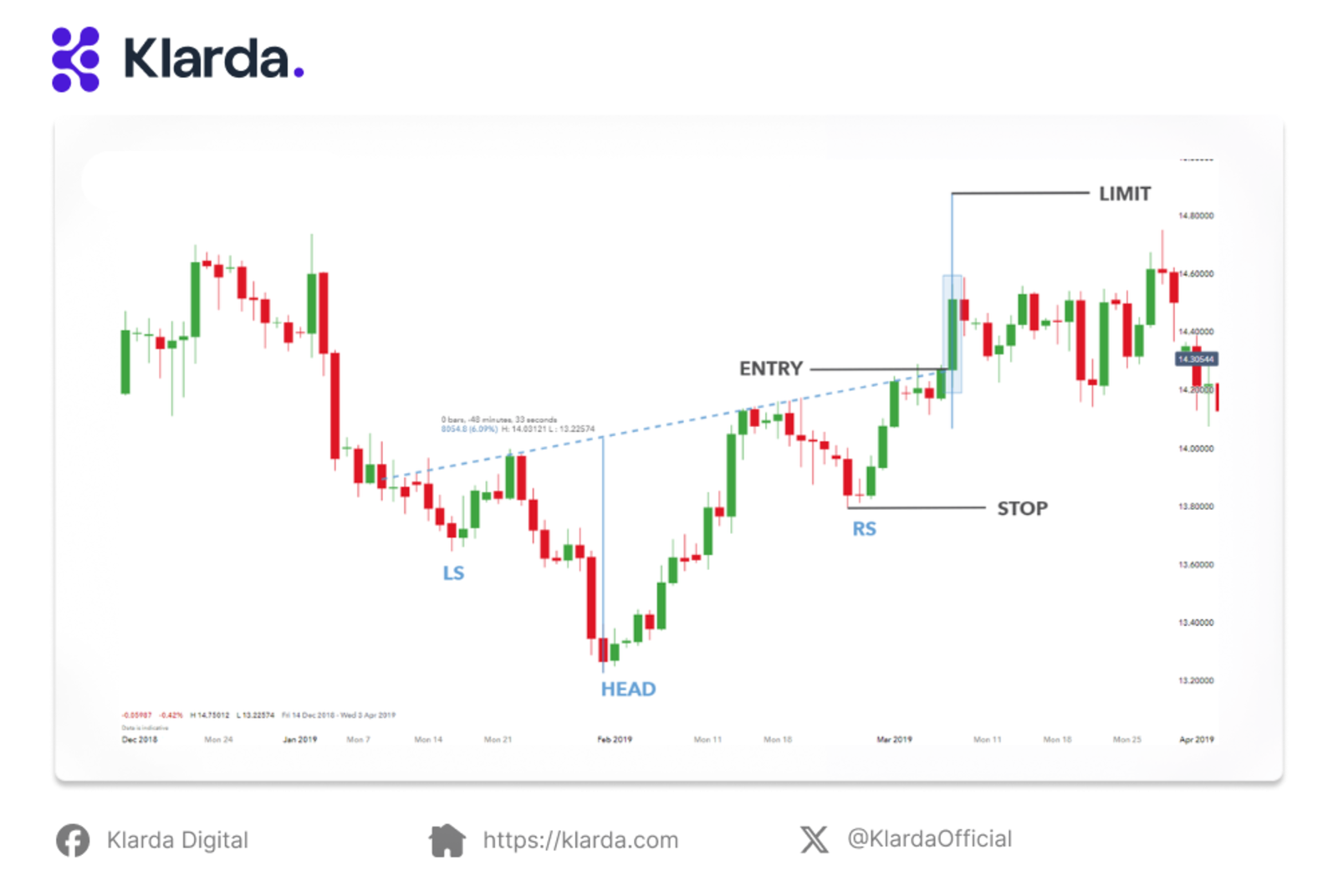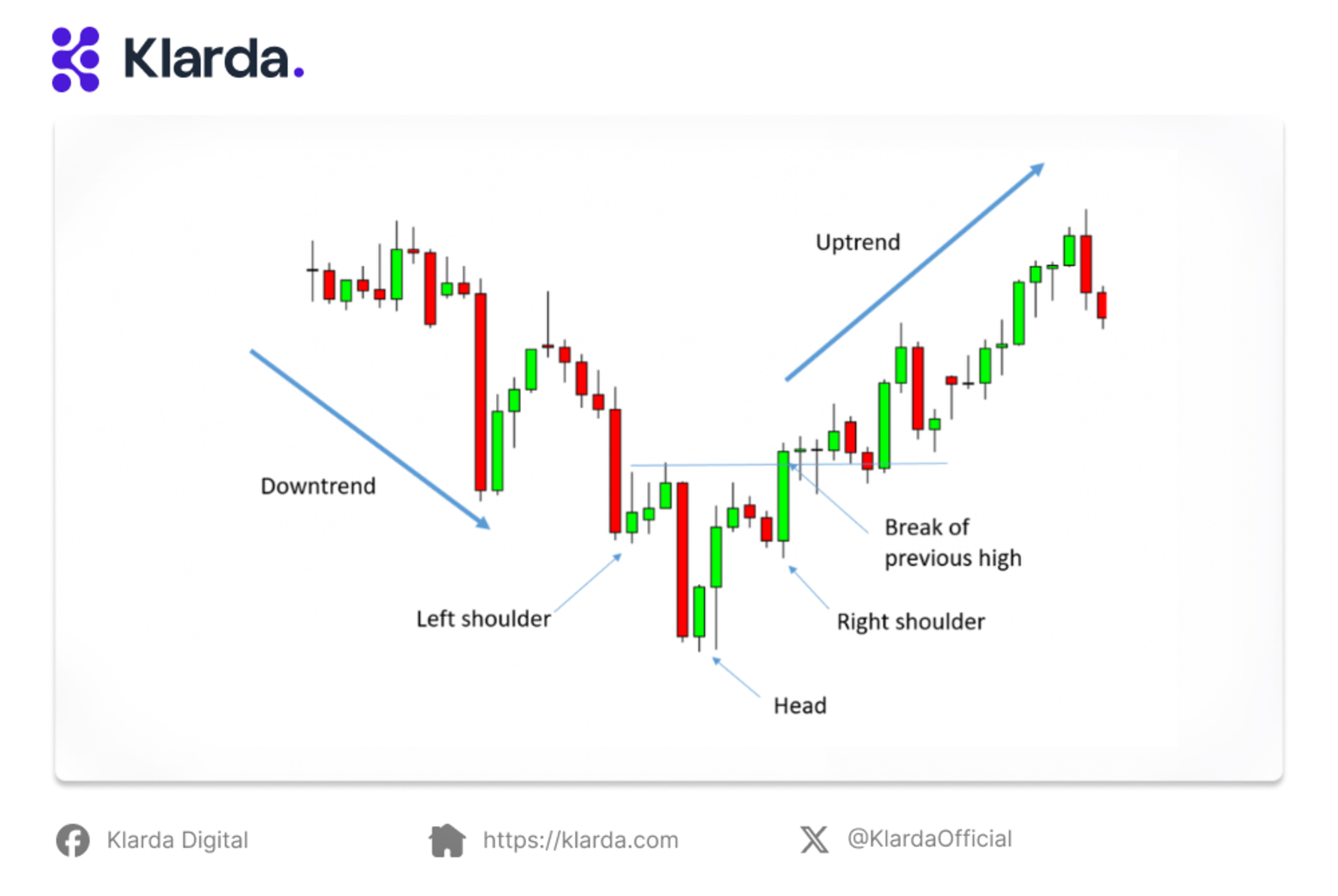Inverse Head And Shoulders Pattern
Learn about the inverse head and shoulders pattern, its key characteristics, trading strategies, and how to effectively utilize it for market analysis.
The inverse head and shoulders pattern is a popular technical analysis tool used to identify potential bullish reversals in the market. This pattern consists of three troughs, with the middle trough (the head) being lower than the outer two troughs (the shoulders). When formed correctly, this pattern can signal a significant reversal from a downtrend to an uptrend.
In this article, we will explore the key components of the inverse head and shoulders pattern, its advantages and disadvantages, and how to effectively trade it.

KEY TAKEAWAYS
- An inverse head and shoulders pattern, like its standard counterpart, is simply an upside-down version.
- It is often utilized to forecast reversals in downward trends.
- When this pattern is completed, it indicates a potential shift to a bullish market.
- Traders usually take a long position when the price breaks above the neckline resistance.
WHAT IS INVERSE HEAD AND SHOULDERS PATTERN?

What is inverse head and shoulders pattern
Unlike the head and shoulders pattern, which appears after an uptrend, the inverse head and shoulders pattern forms following a prolonged downtrend. It suggests a potential point of market exhaustion, signaling that the decline may be ending. Traders often use this pattern to identify buying opportunities as the market bottoms out and begins to rise.
COMPONENTS OF THE INVERSE HEAD AND SHOULDERS PATTERN

Components of the inverse head and shoulders pattern
- Initial Downtrend: The pattern begins with a downtrend, marked by a clear decline in the asset's price. This phase is characterized by a sequence of lower lows and lower highs.
- Formation of the Inverse Head and Shoulders: The pattern takes shape as the price forms a low (the "left shoulder"), followed by a deeper low (the "head"), and then a higher low (the "right shoulder"). This structure establishes a resistance level known as the neckline, connecting the two shoulders.
- Breakout Above the Neckline: The final phase occurs when the asset's price rises above the neckline resistance.
This breakout indicates a potential shift in trend, suggesting that buyers have gained dominance and driven the price above the previous resistance.
HOW TO TRADE THE INVERSE HEAD AND SHOULDERS PATTERN?

The inverse head and shoulders pattern in trading
The inverse head and shoulders pattern is a bullish reversal pattern that indicates a potential uptrend after a downtrend. It's characterized by a series of three troughs, with the middle trough (the head) being lower than the outer two troughs (the shoulders).
Identify the Pattern:
- Look for a clear downtrend preceding the pattern.
- The left shoulder, head, and right shoulder should have distinct lower lows.
- The neckline, connecting the highs of the left shoulder and right shoulder, should be clearly visible.
Wait for Breakout:
- Neckline Breakout: The pattern is confirmed when the price breaks above the neckline. This indicates a potential reversal from the downtrend.
- Retest: Sometimes, the price might retest the neckline as support after the breakout. This can provide a good entry opportunity.
- Set Stop-Loss: place your stop-loss below the neckline, preferably at the low of the right shoulder. This protects your capital in case the pattern fails.
- Determine Profit Target: a common method to determine the profit target is by measuring the distance between the neckline and the lowest point of the head. Add this distance to the breakout point to calculate the potential target.
However, it's important to consider other factors like support and resistance levels, as well as overall market conditions.
Key Considerations:
- Pattern Quality: The more symmetrical the pattern, the stronger the potential reversal signal.
- Volume: Increased volume during the breakout can strengthen the signal.
- Confirmation: Look for additional technical indicators or fundamental factors to confirm the bullish reversal.
- Risk Management: Always use proper risk management techniques, such as stop-loss orders, to protect your capital.
ADVANTAGES AND DISADVANTAGES
Advantages:
- Strong reversal signal: When formed correctly, it's a powerful indicator of a potential bullish reversal.
- Clear entry and exit points: The neckline breakout and calculated profit target provide clear trading opportunities.
- Measurable profit potential: The pattern allows for a quantifiable profit target.
- Versatile: Can be applied to various financial instruments.
Disadvantages:
- Subjective: Identification can be subjective.
- False breakouts: The price may break above the neckline but then fail to sustain the uptrend.
- Time-consuming: It may take time for the pattern to fully form.
- Limited profit potential: Compared to other strategies.
- Sensitive to market conditions: Economic factors and other indicators can influence its effectiveness.
THE BOTTOM LINE
The inverse head and shoulders pattern is a powerful tool for spotting potential bullish reversals, offering clear entry and exit points. However, no technical indicator is foolproof—false breakouts and subjective interpretations can lead to losses. For best results, combine it with other technical analysis tools and practice sound risk management.
If you’re seeking a reliable platform for insights based on the inverse head and shoulders pattern, look no further than Klarda. Klarda provides accurate, up-to-date, and transparent information for cryptocurrency asset owners on EVM networks. With features like the Klarda Marketplace, users get a comprehensive view of the cryptocurrency market, supporting efficient trading. Klarda also offers resources for both fundamental and technical analysis, along with precise trading signals.
This wraps up our discussion on inverse head and shoulders pattern. We hope you find this information helpful in making informed trading decisions. Please note, this content is for informational purposes only and is not investment advice.
Updated 7 months ago